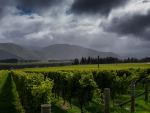Appellation Marlborough Wine has tightened its certification criteria, putting in place minimum brix at harvest and new geographical boundaries for wines wearing the AMW icon.
Members' wines must now meet a minimum sugar ripeness level of 18 brix at harvest, with the exception of fruit destined for low alcohol product.
In addition, all certified wines must be sourced from a more confined area than the Marlborough Geographical Indication (GI) boundaries, which extend to Picton and Kaikoura.
Under AMW, wines must be grown within the Wairau, Awatere and Blind River, and South Coast subregions demarcated on the organisation's Wine Map of Marlborough.
"Now more than ever, consumers can be assured that every one of our wines is an authentic, quality expression of our region," AMW Chairperson John Buchanan says. "It's a measure of our members' commitment, that this has been passed unanimously."
AMW's quality certification process requires wines to be sourced exclusively from sustainability registered vineyards within the region, bottled domestically, and independently verified by an experienced tasting panel.
The announcement of additional criteria comes on the heels of the appointment of Michael Wentworth as Chief Executive Officer.
"What Appellation Marlborough Wine has achieved in a few short years is phenomenal," he says. "Their single-minded focus on protecting and enhancing Marlborough's wine quality is to be admired. I am really looking forward to working alongside many of the region's flagship wine producers and elevating their collective efforts globally."












